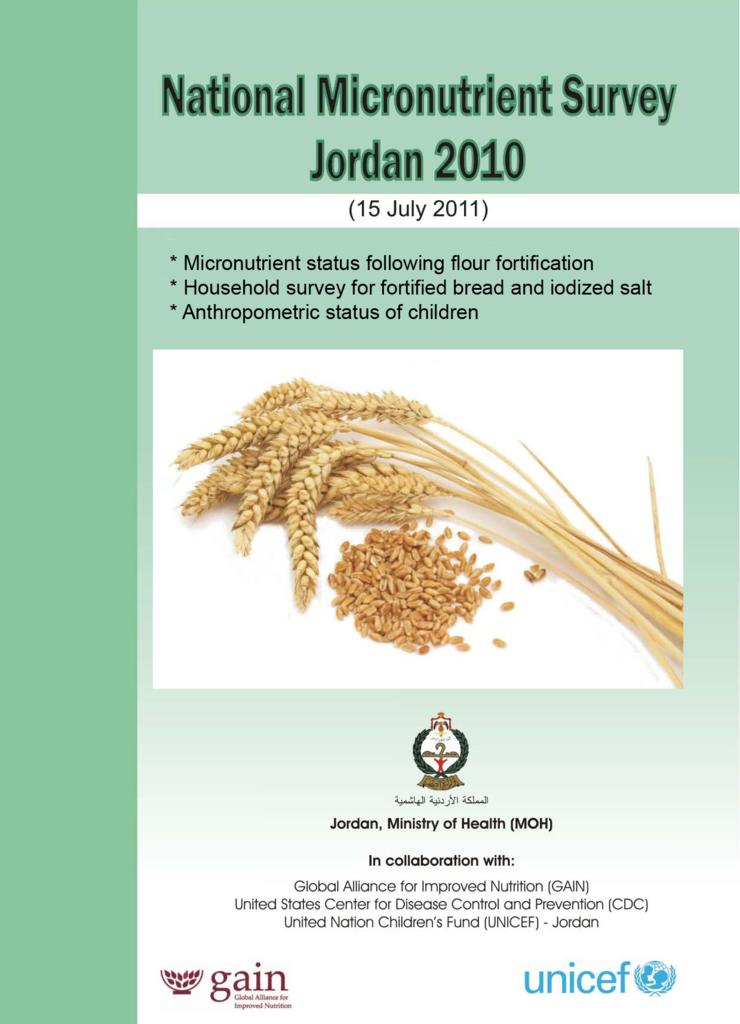This report summarises the findings of the 2010 micronutrient survey conducted in Jordan in March and April 2010. The survey follows an earlier micronutrient survey conducted in 2002, four to five months after the start of a national flour fortification program.
The 2010 micronutrient survey collected data on micronutrient status of non-pregnant women of reproductive age (anaemia, iron deficiency, iron deficiency anaemia, vitamins A, D, and B12, and folate) and children 12 – 59 months (anaemia, iron deficiency, iron deficiency anaemia, and vitamins A and D); assessed the prevalence of households with fortified bread and iodised salt; and assessed the anthropometric status of children. The objectives of the survey were to measure:
- The prevalence of anaemia, iron deficiency, and iron deficiency anaemia in women and children.
- The prevalence of vitamin A deficiency in women and children.
- The prevalence of vitamin D deficiency in women and children.
- The prevalence of vitamin B12 deficiency in women.
- The prevalence of folate deficiency in women.
- The percentage of households that possess bread fortified with micronutrients.
- The percentage of households that possess adequately iodized salt.
- The anthropometric status of children
Survey results showed a dramatic improvement in the iron status in children, but little change in the iron status of women. Among non-pregnant women, a high prevalence of anaemia (30.6%), iron deficiency (35.1%), iron deficiency anaemia (19.8%), and vitamin D deficiency (60.3%) was measured. For children, the highest instances of micronutrient deficiencies included anaemia (17.0%), iron deficiency (13.7%), vitamin A deficiency (18.3%) and vitamin D deficiency (17.8%). Anthropometric measurements, taken for children 12 to 59 months, showed that 3.5% of children were wasted 2.5% were underweight and 10.8% were stunted.
Efforts are required to improve coverage of fortified foods across the country. Among bread samples, 44.1% tested positive for the presence of added iron and salt samples showed 66.5% of households had salt that was adequately iodised. Overall, the fortification program in Jordan is considered well-designed and is expected to make further positive impacts on the reduction of micronutrient deficiencies when fully implemented.
